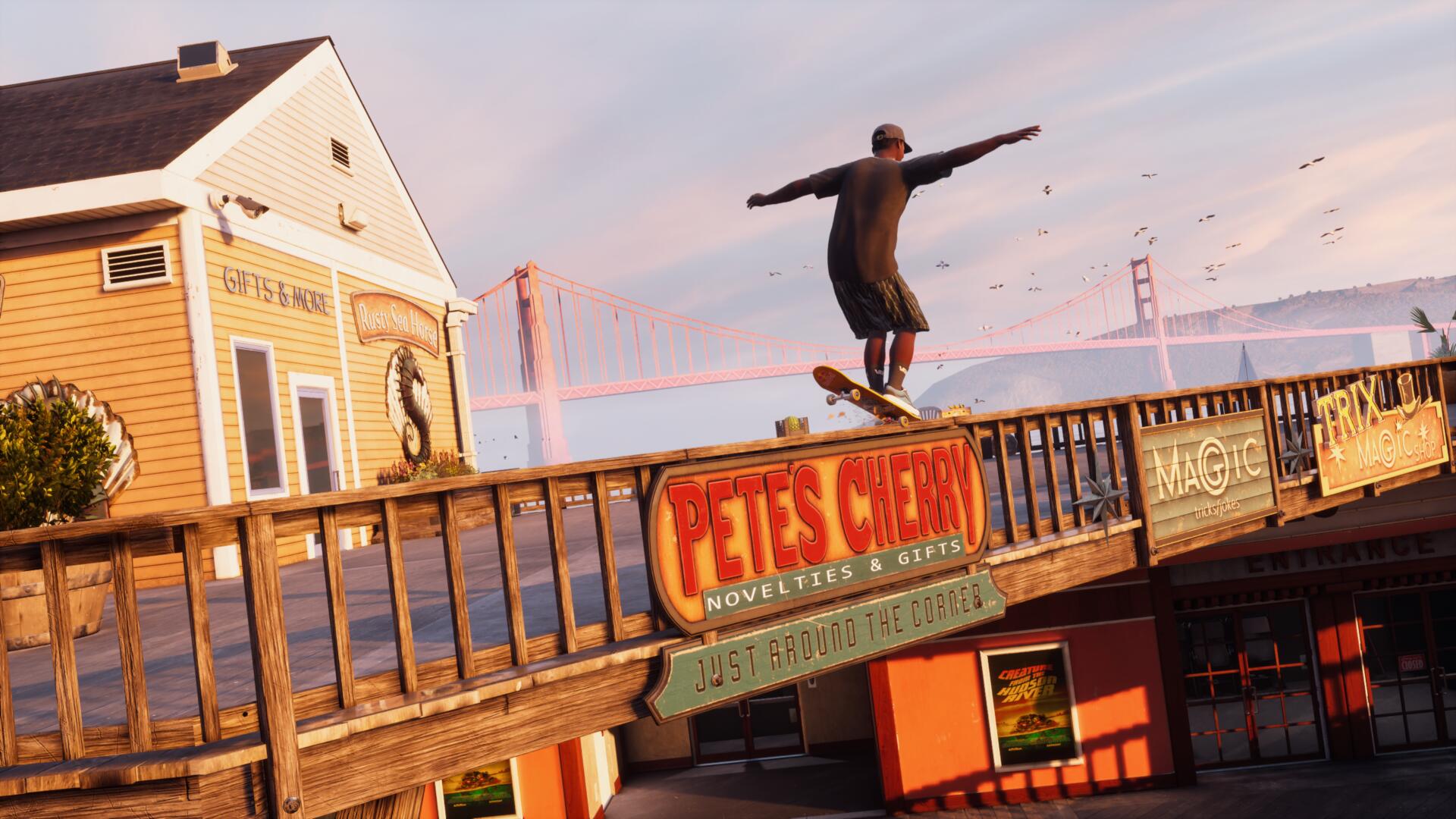Supermassive describes Directive 8020 as "The Thing in space," but even with the survival horror elements, it's a Dark Pictures game through and through
Gamescom 2024 | "They're essentially in a tin can, and it's death on the other side of it – and that's a fantastic space to be"
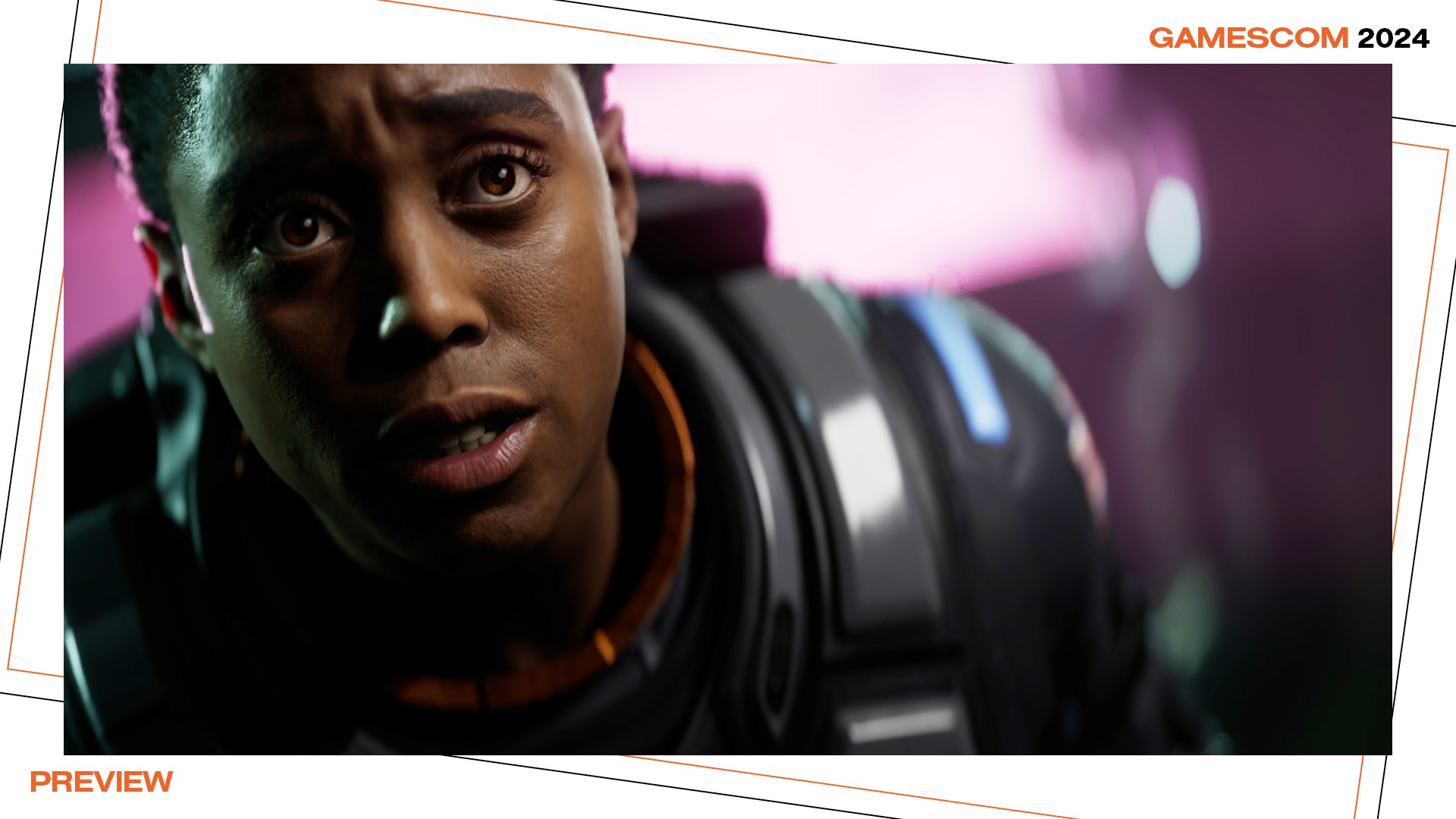
A light flickers in the darkness. Moments after taking our first steps in Directive 8020, a mechanical groan warns of a nearby object's imminent fall. It crashes to the ground before us, echoing throughout the cavernous metal passageway. The reverberation grows louder, louder, louder still, and then…silence.
This hands-off demo of Directive 8020 is something I've been looking forward to for weeks. As I watch Supermassive Games' creative director Will Doyle play through a late-game sequence, accompanied by executive producer Dan McDonald's play-by-play explanations, the questions keep coming. This is not just any upcoming horror game, but the next instalment of The Dark Pictures Anthology that marks both a new season and a brave next step for the episodic series as a whole: it's going survival horror.
Small step for man, massive leap for Supermassive

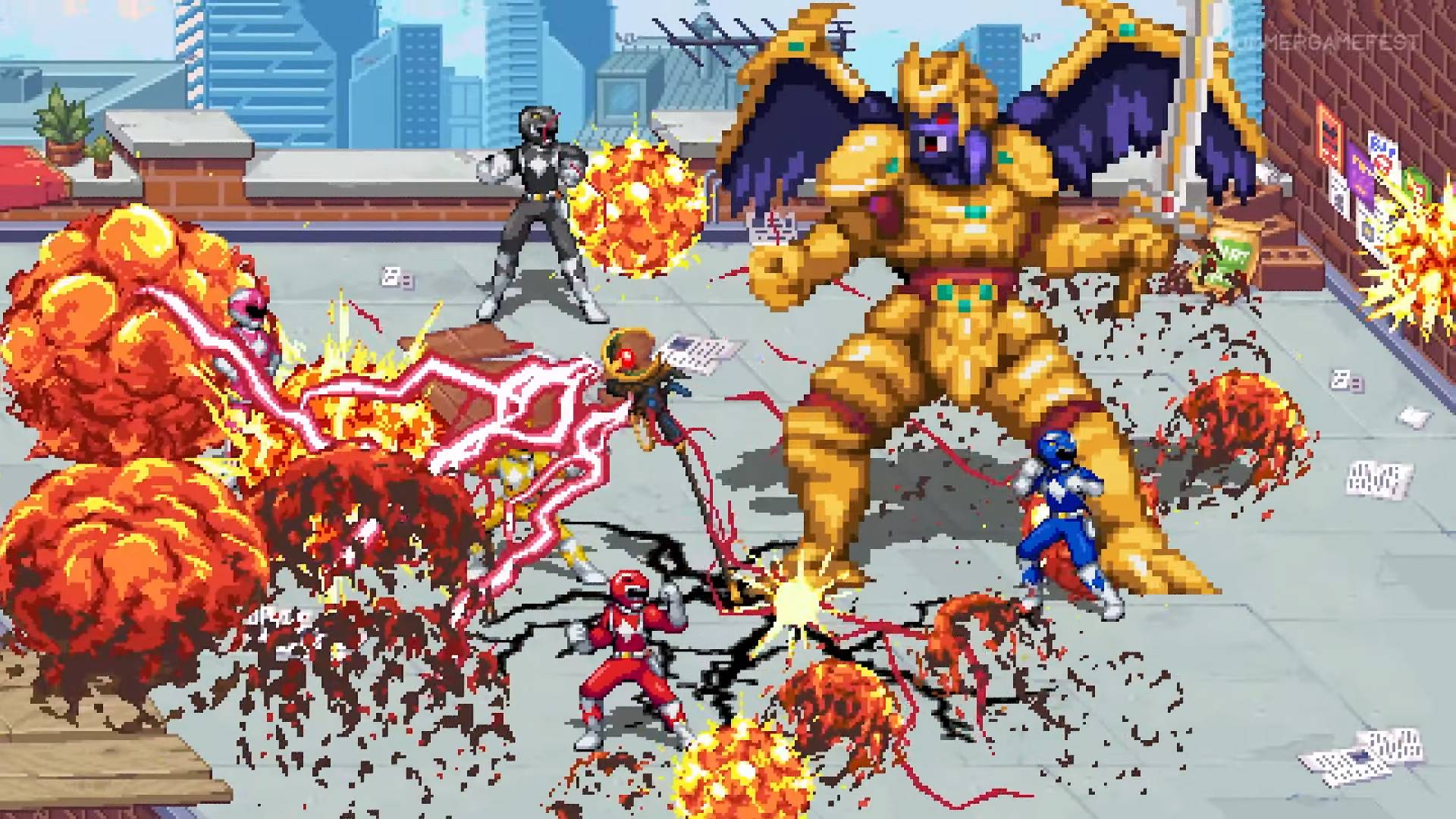
GamesRadar+ visited Cologne to play the most anticipated new games of 2024 at Gamescom, and speak to the developers bringing them to life. For more of our hands-on previews and exclusive interviews, visit the Gamescom 2024 coverage hub.
For a developer like Supermassive, proven experts in the realm of cinematic horror, I did have some immediate concerns about any format changes. Any fan of the Dark Pictures Anthology knows the games as interactive movies of sorts, removing the onus from the player to be technically "good" at anything in particular – except, perhaps, having sharp reflexes for quick-time events. The unique blend of immersion, interaction, and just enough arm's length security reassures players that there is no wrong way for the story to play out, no matter who lives or dies.
But in Directive 8020, it's not quite the same. "We're definitely pushing this game into a kind of more survival horror space," Doyle tells me when I sit down to chat to both developers after the demonstration. "We're giving the player a lot more agency by introducing these real time threats, these sort of Hunter-Killer monsters, and bringing in more on-the-sticks gameplay that goes with that."
Creating a survival horror-tinged game set in outer space would surely open it up to comparisons with the subgenre's titans, from Dead Space to Alien Isolation, and competition like that is hard to beat. But Directive 8020 is not a full-on survival horror game – "it's not completely free-form, and it's not like a sandbox exploration of the whole ship," says Doyle. Instead, Directive 8020 implements some survival horror DNA to create a brand new monster while retaining its accessible framework.
By combining the studio's signature cinematic, choice-driven narrative structure with a dose of cat-and-mouse action, Directive 8020 is pushing the boundaries of what players expect from Supermassive. "We've always had the exploration areas in each of the games, you know, going back to Man of Medan and Little Hope," McDonald explains, mentioning how Little Hope's expansion of player agency was "iterated on-the-go" as the developers worked on it. "We pushed, obviously, a lot more with the exploration in The Devil in Me, and this feels like the next natural step for us. There's a reason why we've taken a lot longer to get this game up, because this kind of change is not a small step. It's a big step for us – a massive step."
Before we get into the nitty-gritty, though, I have one burning question: what is Directive 8020, and what does it do to elevate the survival stakes for our ensemble cast?
Weekly digests, tales from the communities you love, and more
"I'm glad you asked that, because not enough people have," Doyle grins. "Since we're talking about the name of the game, Directive 8020 was actually a real NASA directive, which said that if astronauts returning to Earth encounter any sort of biological contamination – IE aliens – they have to go through a quarantine process. So in our story, there is a situation that our astronauts find themselves in where it's the question of, 'okay, if we get out of here, are we bringing this back to our dying planet and therefore causing the end of humanity?' There's more to it than that. And you'll see when you play it, what a big decision it becomes, but that is a strong aspect of the story."
The devil unknown
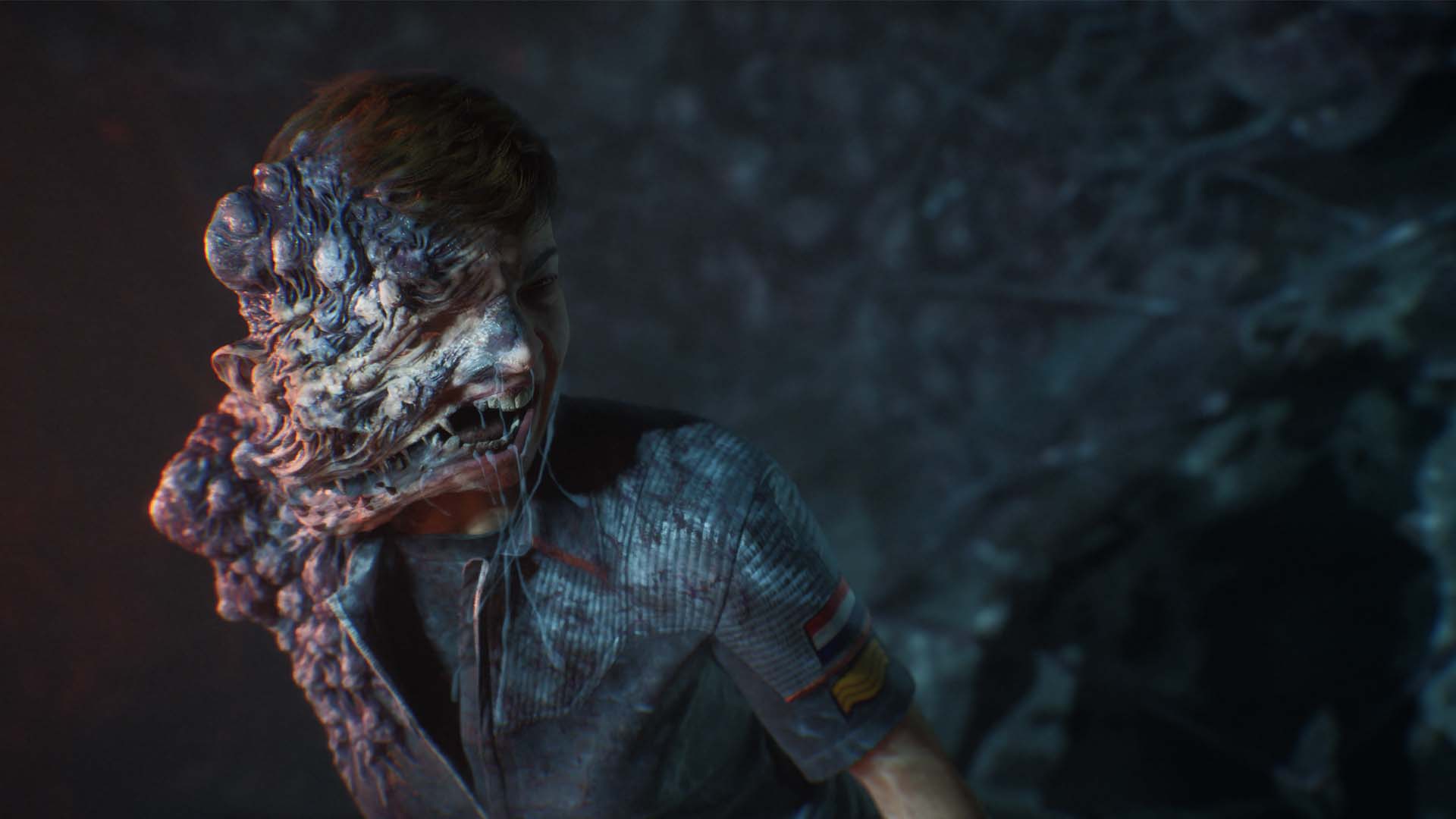
It's quite controlled, in a cinematic way, but at the same time, it encourages you to play it differently each time you go.
Will Doyle
The story in question plays out much like any Supermassive game: it features a revolving ensemble cast, each of their lives resting in the sweaty palms of the player as they bear witness to the consequences of their own actions. But a major point of intrigue in any Dark Pictures game is the evil at work. In the case of Directive 8020, we're talking about the malevolent, unnamed "creature" hunting the Tau Ceti f crew on their own spaceship.
"We were very much initially inspired by the movie The Thing, in terms of a creature that can morph its body and warp itself to look like anyone from your crew," Doyle says, "but we've created a unique thing. We've taken it further. And there's a whole load of different forms that it has that we can't show you, and there's various bits about it we can't talk about right now, but understanding its motivation is part of the story." The 20-minute hands off demo showed this malevolent creature in action, using mimicry to lure its prey in while spreading a thick, fleshy webbing around the infested spaceship.
Cosmic horror's role in the existential plight of humanity is another key theme in Directive 8020. "I think it's very relevant nowadays," Doyle says. "We're living in a time of climate problems, and we start to question our place in the universe. And the answer might be that the universe doesn't care. You know, that's really dark, but that's the nature of cosmic horror. When this crew of astronauts desperately trying to save Earth goes out into deep space, what if deep space doesn't care about us? We're just a little tiny planet in the middle of the gulf of space."
Another linked form of fear? Thallassophobia, the fear of deep open ocean. "Space is kind of terrifying in the same way as the deep sea," says Doyle. "We also have these big, open, majestic areas that are dark and expansive, and they're scary in a different way." The creature itself takes inspiration from jellyfish, deep sea worms, and all sorts of icky nasties bubbling away in the pitch black depths. After seeing how Directive 8020's creature absorbs itself into growths on the ship, moving like a sentient carpet of sea moss or the fungal megamycete ooze in Resident Evil 7, I more than believe it.
So, the philosophy of horror in Directive 8020 is a multi-faceted entity ofcosmic horror, monstrous horror, and extreme claustrophobia. McDonald looks back to something that Doyle had said the day before: "You were talking about how they're essentially in a tin can, and it's death on the other side of it, and that's a fantastic space to be."
Choose your own misadventure
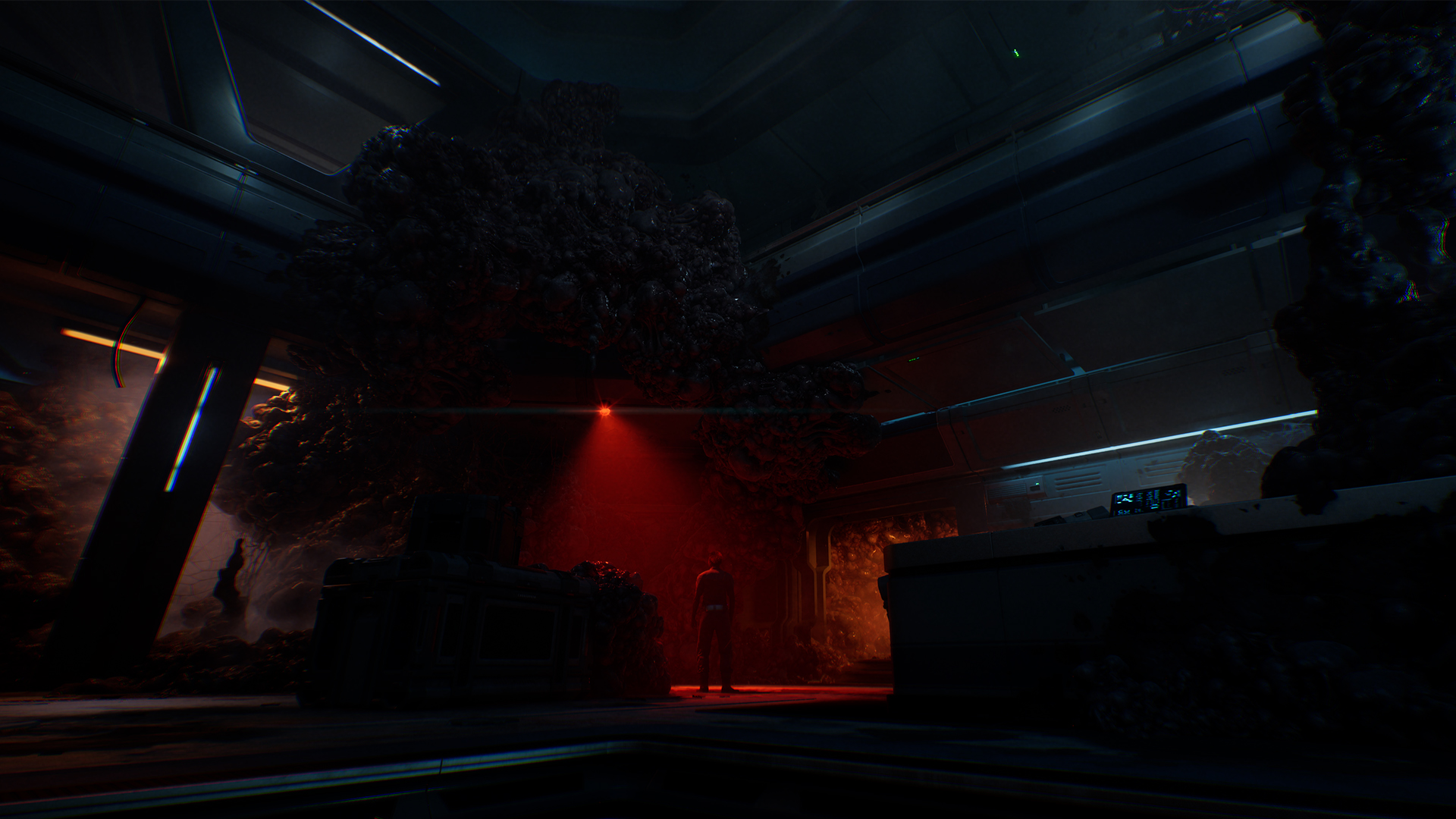
Fans of the Dark Pictures shouldn't be afraid.
Dan McDonald
But balancing these new survival horror elements with the cinematic core of Dark Pictures is no spacewalk in the park. "One of the real challenges we've had, and one of the things we're really happy with, is getting that driving pace of a cinematic experience. So it still feels like a high end movie or TV show that you're the star of, but we also managed to weave through it all these moments for player agency, and survival horror gameplay.
"We call them encounters," Doyle says of the moment-to-moment opportunities for players to get more involved in the action, "and we need to signal to the player really, really clearly that you're in this kind of moment. It's very cinematically paced so that you'll be put into this situation with a very clear goal of where you need to get to. But within that environment, it is much more dynamic than we've done before." With the creature moving through its growths and able to pop up almost anywhere, the player has "a number of different ways to get past it, mainly through use of your tools. It's quite controlled, in a cinematic way, but at the same time, it encourages you to play it differently each time you go."
With real-time stealth needed to evade the creature at times, greater player agency might be making some more timid fans balk. Thankfully, the fear is still yours to tinker with. "We've already got a load of accessibility options and difficulty settings," McDonald confirms, while Doyle goes on to describe it as "an experience that you can tailor to your own skill set and preference." He mentions a "forgiving mode that sort of slows down all your quick-time events and so forth," leading right up to a lethal mode to amp up the danger tenfold. "We're developing systems that will allow you to tailor the behavior of the monster to your preference as well. You can still have the presence of the creature, and you can still have all the intensity of that moment [without the danger], which is what we're really trying to do. We're trying to give you that extra fear, but if you don't want [the creature] to take you out as easily, you can adjust that."
At the end of the day, Directive 8020 is not going to change the rules of the game entirely – it's simply broadening the scope of the series' future. "Fans of the Dark Pictures shouldn't be afraid," McDonald reaffirms. "Directive 8020 is still a Dark Pictures game. It still has the cinematic style we have, the beautiful cinematography that we have, all the choices and the drama. So that's all still there – this [survival horror element] is additive to it."
So, will I be playing Directive 8020? You bet your creepy jellyfish alien monster ass, I am. It certainly sounds different to anything Supermassive has tried before, but the studio's track record for excellence is enough to make me button my lip, accept the outstretched hand, and just pray it doesn't get bitten off.
Supermassive Games is responsible for some of the best horror games ever.

Jasmine is a staff writer at GamesRadar+. Raised in Hong Kong and having graduated with an English Literature degree from Queen Mary, University of London in 2017, her passion for entertainment writing has taken her from reviewing underground concerts to blogging about the intersection between horror movies and browser games. Having made the career jump from TV broadcast operations to video games journalism during the pandemic, she cut her teeth as a freelance writer with TheGamer, Gamezo, and Tech Radar Gaming before accepting a full-time role here at GamesRadar. Whether Jasmine is researching the latest in gaming litigation for a news piece, writing how-to guides for The Sims 4, or extolling the necessity of a Resident Evil: CODE Veronica remake, you'll probably find her listening to metalcore at the same time.
